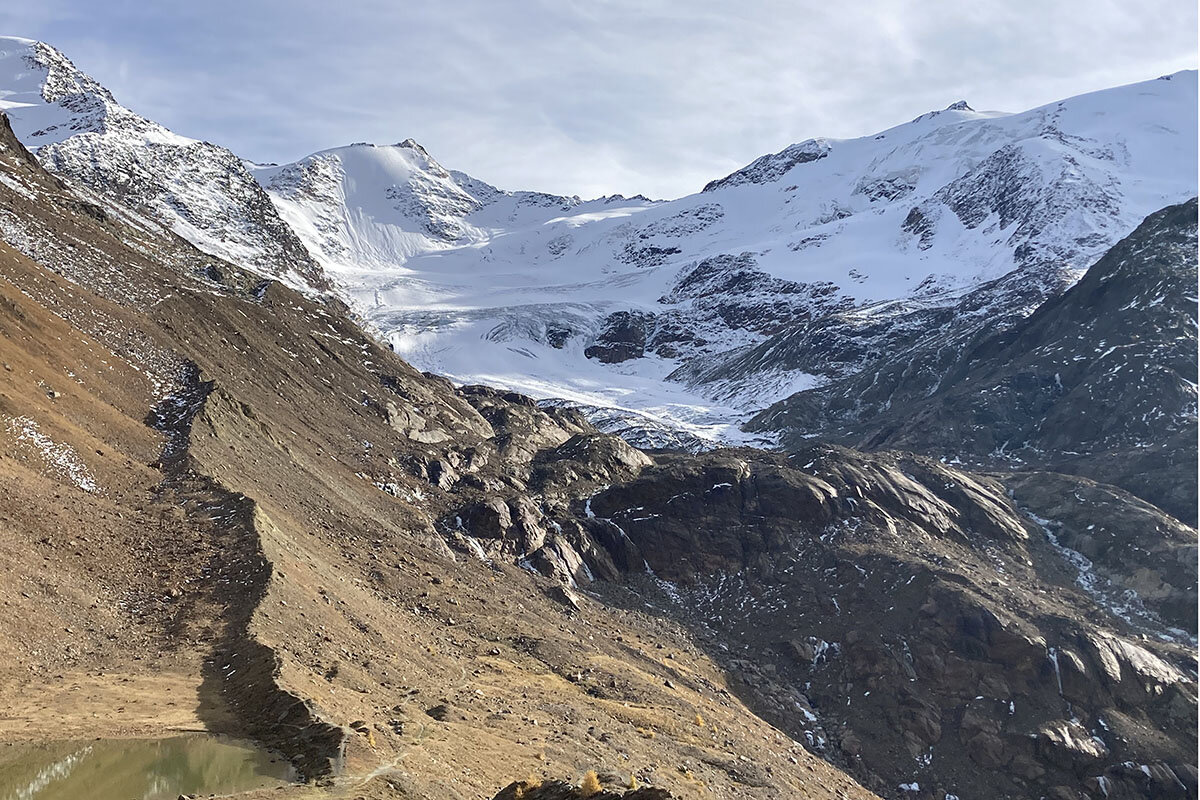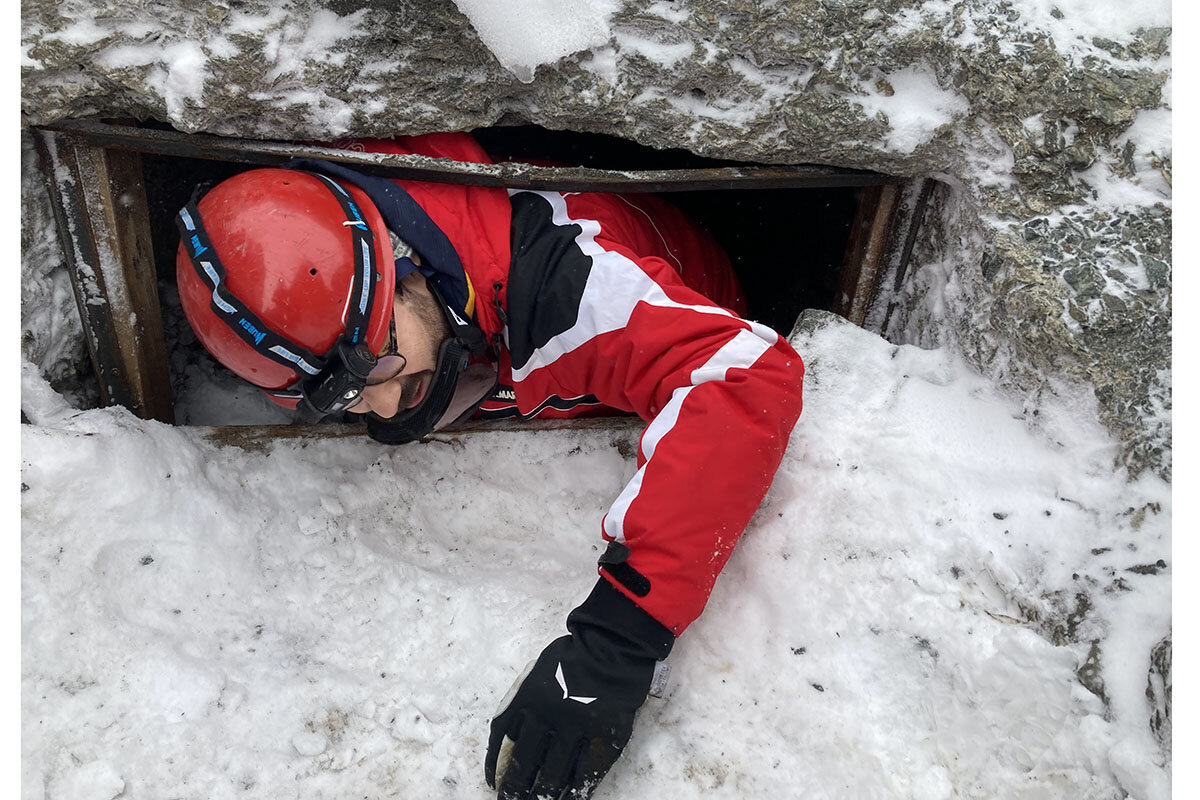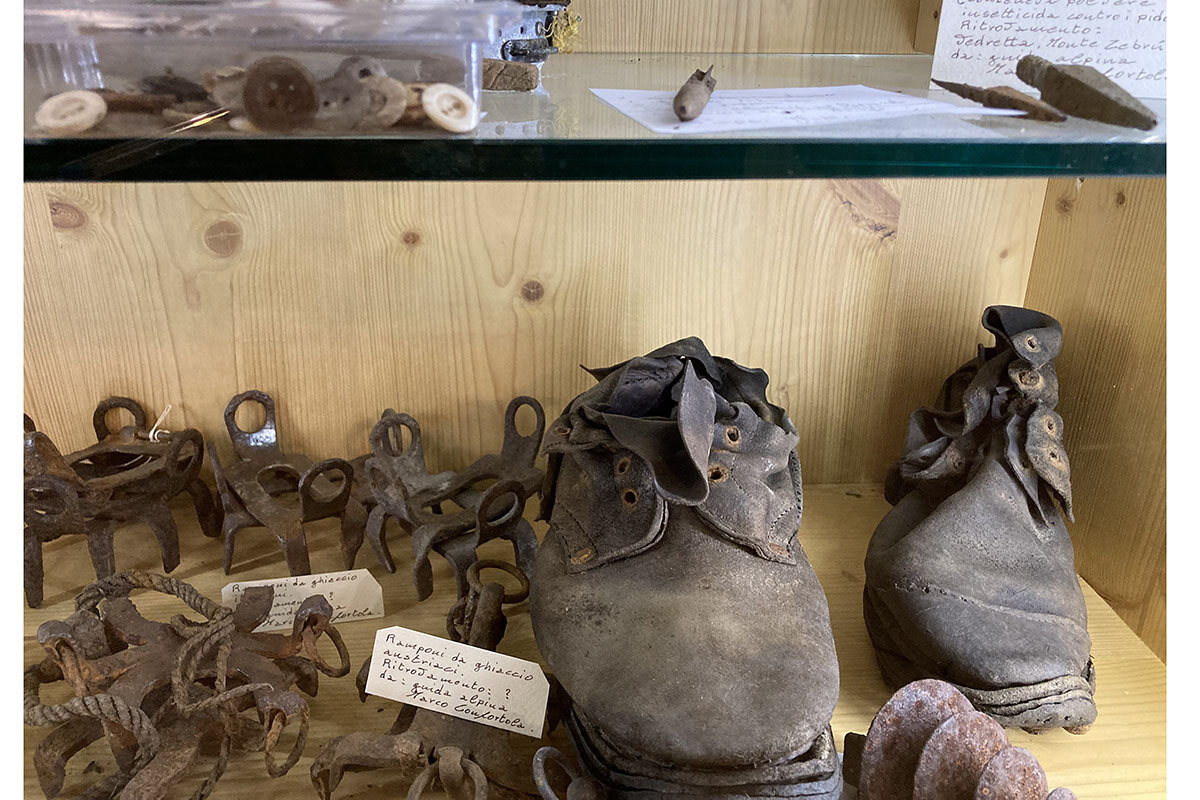Why climate change has historians rushing to save a WWI Alpine bunker
Loading...
| Monte Scorluzzo, Italian Alps
The straw is still soft enough to sleep on. Scraps of newspaper remain legible. Buttons cling to still-intact uniforms. These items are among a hoard of artifacts recently found in the dark recesses of a World War I military bunker high in the Italian Alps.
The bunker was occupied by Austro-Hungarian soldiers in what was known as La Guerra Bianca or the White War, the highest theater of conflict in the world, where soldiers on opposing sides battled freezing cold, avalanches, and lack of food as much as each other.
Entombed in ice and snow for more than a century, this bunker and others like it are now coming to light as a result of global warming.
Why We Wrote This
The decisions that climate change demands answers to usually seem far off. But a melting glacier in the Alps shows that sometimes a quick response is needed to preserve thawing but perishable history.
The effects of climate change are often hard to discern for the average person. It is difficult to know if the storm that sweeps across your hometown is more intense than previous ones. What responses can be made are mostly incremental, sweeping, and long term.
But that is not the case among the long-abandoned trenches and sniper positions of the high Alps.
Here, as the snow and ice melt as a result of rising temperatures, historians and archaeologists must take immediate action to preserve invaluable evidence before it is destroyed from being exposed to air and water. Artifacts made from perishable materials like wood, leather, and paper are particularly at risk from the damp conditions created by the melting ice.
“We have an opportunity, but it is an opportunity that must be grasped very quickly. These places not only conserve all sorts of artifacts, but scientific traces of how life used to be from a botanical, entomological, and glaciological point of view 100 years ago,” says Giovanni Cadioli, a military historian and postdoctoral researcher at the University of Padua in northern Italy.
“The traces must be preserved before the ice melts and it becomes impossible to scientifically analyze all the data that these places gift us.”
The White War, unfrozen
The bunker, which was found last summer, is located in the vast Stelvio National Park, on the slopes of Monte Scorluzzo. It was once on the front line between the Italians and their Austro-Hungarian adversaries. A century ago, the bunker overlooked a vast glacier. Not anymore.
“During the First World War, there was a huge glacier called the Platigliole glacier. Now, it has totally disappeared,” says Stefano Morosini, a mountaineer and a professor of history at the University of Bergamo.
Bunkers and shelters made of rocks and slabs of timber are slowly collapsing as the permafrost melts, he says.
“This is possibly a positive side effect of climate change in that 100 years ago, this mountain was part of a glacier,” says Mr. Cadioli. “You would glimpse rocks only during the warmest days of August. This is no longer the case. The glacier has retreated, the ice is melting, and so places like this, which were frozen in time for 100 years, are coming back to life.”
The bunker was home to a group of around 15 Austro-Hungarian troops, who slept on straw-stuffed mattresses, ate food from tins, tried desperately to keep warm, and made regular forays to take potshots at the Italian trenches.
The work of preserving these time capsules is already underway. A similar bunker, which was found close to the 3,094-meter summit of Monte Scorluzzo, has been dismantled and brought down the mountain to the Alpine town of Bormio, where the constituent pieces are being stored in a warehouse.
Once put back together again, it will form the centerpiece of a new €3.2 million ($3.6 million) museum, dedicated to the White War, which is due to open in 2023 in a medieval tower in the historic heart of Bormio.
The military positions and artifacts that are emerging from this part of the Alps are testament to one of World War I’s least known but most unforgiving combat zones. The conflict began in 1915 when Italy entered the war on the side of the Allies. The Austro-Hungarians quickly occupied the highest peaks and ridges, with the Italians expending much blood and effort to try to take them over the next three years.
Living conditions were appalling – in winter, the temperature fell to minus 40 degrees Fahrenheit. Positions were manned year-round. The highest point that was occupied by troops was Monte Ortles, at a staggering 12,800 feet (2.4 miles). The forces of nature were as dangerous as bombs and bullets. Men died of frostbite, avalanches, and lightning strikes, some of which blew up ammunition dumps.
“On no front, not on the sun-scorched plains of Mesopotamia, nor in the frozen Masurian marshes, nor in the blood-soaked mud of Flanders, does the fighting man lead so arduous an existence as up here on the roof of the world,” wrote a correspondent for the New York World in 1917.
A captain in the Alpini, Italy’s mountain troops, wrote in his diary: “When, after the war, someone climbs these mountains and finds the roads, the houses, the trenches dug by these wonderful soldiers of ours, they will be amazed to think that here an army lived and fought.” He survived the White War only to die in France in 1918.
The thawing Alps
In the years to come, more historical material is likely to emerge from this once frozen landscape, providing a treasure-trove of information for historians.
Even so, few in the Italian Alps would actively wish for the demise of glaciers. “Every summer, more artifacts emerge from the ice as the glaciers melt. But of course if we could choose, we would want the glaciers to remain,” says Massimo Sertori, a regional politician who is involved in financing the new museum in Bormio.
Scientists say that the majority of the 4,000 glaciers in the Alps could be lost by the end of the century unless climate change is checked.
“For glaciers in countries like Switzerland, Austria, and France, we have seen a retreat rate of 1.2% per year over the past decade. It’s worse in Italy because our mountains face south and catch more sun. The average rate of retreat for Italian glaciers is 1.6%,” says Davide Fugazza, a postdoctoral researcher, as he measured glacial meltwater flows from a bridge spanning a mountain stream.
“The way things are going now, 90% of glacier mass in the Alps will be lost by 2100. Some will disappear altogether.”









